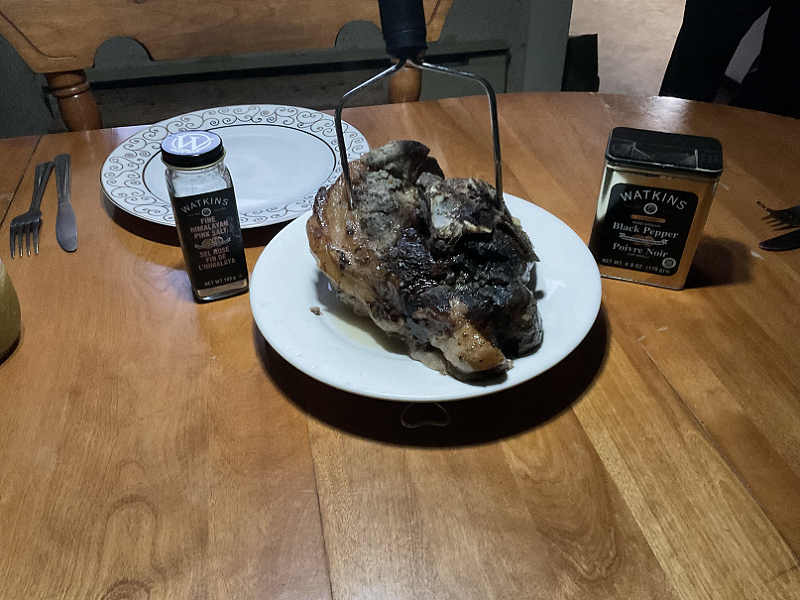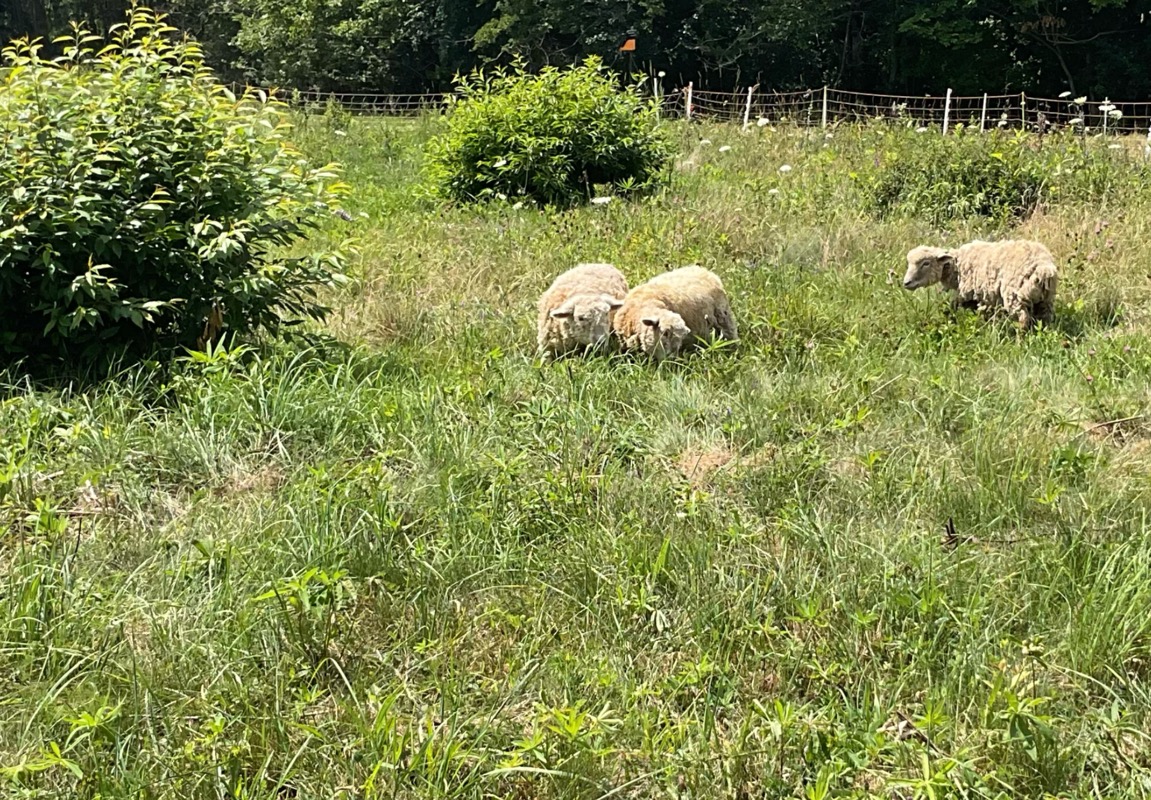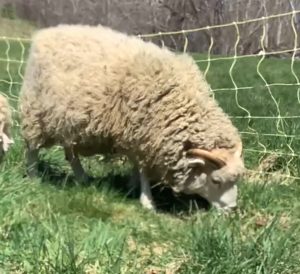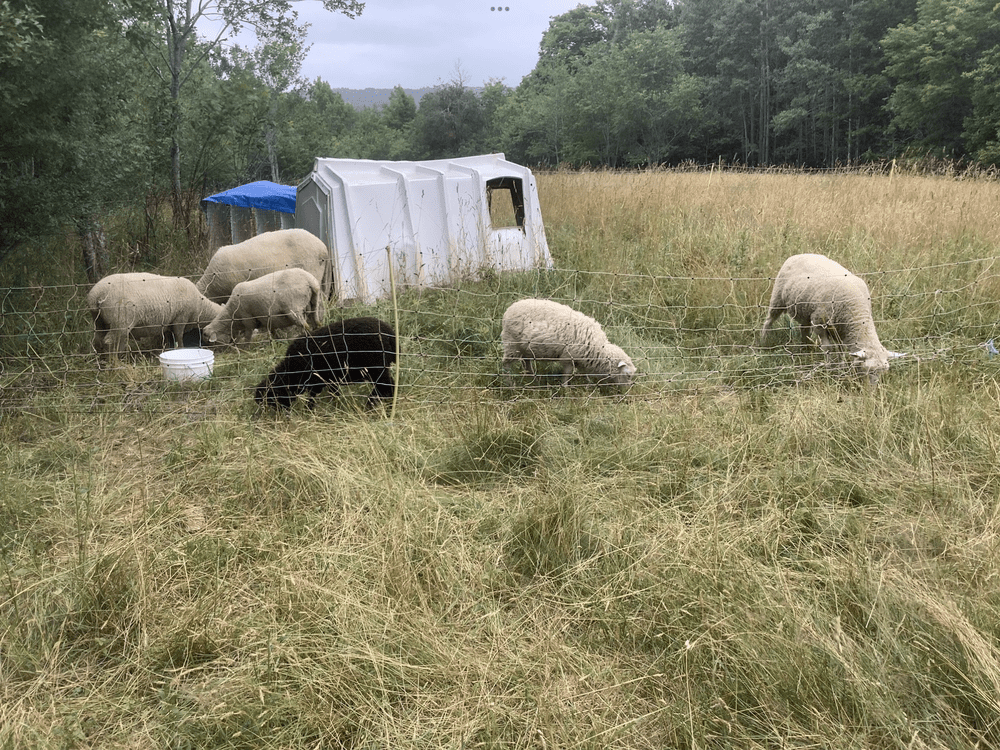Farm Gate, Ethically Raised, Woodland Pastured

We have limited supplies of Heritage Turkey, Wodland Pastured Pork, Nearly Wild Rabbit, and Pastured Lamb, Ranging from $5-$14 a pound. Contact Brian at Briden Farm 902-907-0770

We have limited supplies of Heritage Turkey, Wodland Pastured Pork, Nearly Wild Rabbit, and Pastured Lamb, Ranging from $5-$14 a pound. Contact Brian at Briden Farm 902-907-0770

This is a very difficult post for me to write. Yet I feel I need to, part for my own healing, and part in hopes that no one else ever causes this to happen.
Briden, our Bottle Baby Lamb Ram, born February 21, 2024, about 14 months ago, and seen here giving kisses, has always been friendly, and easy to handle.
We had plans to keep him forever, basically. He was part of the flock. A good protector, and had developed a beautiful set of horns.

Though he’d never used those horns on me, or anyone really. He’d act up a little, from time to time, but never with real aggression. Then that all changed!
About a week ago, May 5th, we had our guy come to sheer our sheep. Briden got a little excited, but nothing serious. He was fixed, “withered” they call it. Although he still had his, um, peanuts. So, though he could not breed a ewe, he still produced testosterone. Although he’d never really been aggressive. Even when being sheered he was good.
After being sheered we turned him, and the ewes, out into the Pasture. I was watching, and somewhat helping the guy who sheers our sheep, and I noticed someone, a guy, in the pasture! He was taunting Briden!! It was at that point Denis showed up at the door, and I looked at him and said, “Can You and that Guy get out of the Pasture!”. Stated rather firmly. I expected a little backlash from Denis later on. I try not to speak like that! However, sometimes it’s needed, like when this Guy is out there teasing the Withered Ram Lamb, Briden!
Thankfully, Denis saw him, “Provoking Briden”. So, when I asked him to get him and that Guy out of the pasture he knew what I meant and why! Denis later told me the Guy was head butting Briden with his hand! Teasing and Provoking Briden! (Please, Never do That!)
It resulted in Briden turning mean! Sometimes that’s all it takes! The next day when I went back to feed and water the sheep, Briden came for me! Not once, not twice, but three times!!! He was mean, and Wild, and I had to address the problem. First attack I tried to calm him with gentleness. Then with firmness. Then, the third time with him not backing down I had to do what I had to do to get out. Badly beat and bruised, but still alive! Yes, a 100 lb sheep in a mood like that can inflict serious injury!
The next day, I was very sore, hurt, and bruised. Thankfully nothing broken!
Although, as I told Denis, “As hurt as I was physically, my heart hurt more!”
My heart hurt, because, I was unable to tame Briden after that!
sometimes it# just like a switch flips in their head! They go Mean! Very Mean!
It’s sad, heart breaking, especially when there was no need of anyone teasing Briden!
So, please, stay out of the Pastures, never provoke a sheep! Especially a Ram! Or any animal for that matter! I’ve not seen that neighbour since! Probably a good thing! I’m not impressed!
Thankfully my body is healing, my heart is broken, as we had to take Briden to the Butcher today.
My heart will heal, as will my body, and eventually maybe even a friendship with that Neighbour! In time! Although I never want him around any of our animals again!

Raising sheep without chemicals and antibiotics isn’t easy, but in our experience, it’s well worth the effort. For the past two years, we’ve successfully managed our flock using rotational grazing, a method that helps control parasites naturally while keeping our sheep healthy. The key to making this work? Staying ahead of the parasite cycle.
The Power of Rotational Grazing
Sheep parasites become infective on Day 5, which means that timing is everything. To prevent infestations, we move our sheep to fresh pasture every four days—before the parasites become a problem. This is more frequent than what’s needed for pigs (every two weeks) or goats (who can stay in the same area for up to 30 days), but it’s necessary to keep our sheep parasite-free.
In an ideal setup, we run a small flock of 5–10 sheep within portable electric netting. Each section of fencing is either 164 feet or 328 feet long, with two fences creating a square of 82’ x 82’ (6,724 square feet). Since a full-size sheep needs about 300 square feet per day, we divide our total pasture area by four days to determine how many sheep we can sustain. For our setup, that comes out to around six sheep per pasture. We adjust as needed based on grazing pressure and pasture regrowth, ensuring the grass stays at least 3–4 inches tall—where parasites are less likely to survive.
Right-Sizing the Pasture for Healthy Grazing
It’s tempting to give sheep unlimited space, but more isn’t always better. If we enclosed a massive pasture (say, 328’ x 492’), each sheep would have over 4,000 square feet per day! That might sound great, but in reality, it’s inefficient.
Sheep, like kids in a candy store, would eat the best forage first, trample a lot of the rest, and only return to less-preferred plants when forced to. Instead, by limiting them to 300 square feet per day, we ensure they graze more evenly, reducing waste and promoting better pasture management.
The 24-Pasture Grid: Maximizing Land Use
We organize our land into a 24-pasture grid, moving sheep every four days. This means we don’t return to the same spot for at least 96 days, effectively breaking the parasite cycle. Since parasites need a host to survive, removing sheep from a pasture for 90+ days ensures that most parasites die off. This system has multiple benefits:
• Reduces fencing costs by 80%
• Encourages better grazing habits
• Prevents overgrazing and pasture degradation
• Breaks the parasite cycle before it starts
It’s not just theory—our sheep shearer, who sees plenty of flocks, has told us that our sheep are in excellent condition. We credit much of that to this rotational system.
Seasonal Adjustments and Multi-Species Grazing
In winter, we house our sheep in a barn, but during the grazing season, we integrate them into a rotation with our goats and pigs. Each species plays a role in managing the land, though they never graze the same pasture simultaneously. Rotating different animals further disrupts parasite life cycles and improves soil health.
Final Thoughts
Raising sheep without antibiotics takes planning and patience, but for us, it’s been an incredibly effective approach. If you’re considering this method, always consult with your veterinarian or livestock expert to tailor it to your specific conditions. What works for us might not be a perfect fit for everyone, but after two years of success, we’re confident that rotational grazing is one of the best ways to keep sheep healthy—naturally.
Stay tuned for more insights on how we integrate goats and pigs into our pasture management system!
Recommended Reading from the Brian Hurlburt Bookshop:

Colostrum, the first milk produced by the mother after giving birth, is essential for the survival and health of newborn ruminants such as calves, lambs, and kids. It differs significantly from regular milk due to its high concentration of nutrients, antibodies, and other bioactive compounds. Here’s why colostrum is crucial:
1. Passive Immunity Transfer
Newborn ruminants are born without a fully functional immune system and lack maternal antibodies. Colostrum provides immunoglobulins (primarily IgG), which offer passive immunity against pathogens present in the environment. This immunity protects the young animal until its own immune system matures and begins producing its own antibodies.
2. Rich Nutritional Content
Colostrum contains higher levels of proteins, fats, vitamins (A, D, and E), and minerals compared to regular milk. These nutrients are vital for energy, growth, and the development of critical organs, particularly the gastrointestinal system.
3. Gut Health and Development
The bioactive compounds in colostrum, such as growth factors, help in the development of the gastrointestinal tract. These compounds stimulate cell growth, repair intestinal tissues, and enhance nutrient absorption.
4. Disease Prevention
The antibodies and antimicrobial factors in colostrum, such as lactoferrin and lysozymes, protect newborns from bacterial, viral, and fungal infections. This is especially important in the early days when the animal is highly vulnerable to diseases.
5. Energy Supply
Newborn ruminants have low energy reserves at birth. Colostrum provides a concentrated source of energy, particularly from fats, which is crucial for thermoregulation and physical activity in the first hours of life.
6. Timing is Critical
The ability of the newborn’s intestine to absorb immunoglobulins decreases rapidly after birth, with the most efficient absorption occurring within the first 6-12 hours. By 24 hours, the gut closure process significantly reduces the uptake of these antibodies. Therefore, ensuring the newborn consumes sufficient colostrum as soon as possible is critical.
7. Quality and Quantity
• Quality: High-quality colostrum has a high concentration of immunoglobulins and is free from contamination. Testing tools like a colostrometer or Brix refractometer can help assess colostrum quality.
• Quantity: The general guideline is that newborns should consume about 10% of their body weight in colostrum within the first 12 hours of life.
Conclusion
Colostrum is more than just the first milk; it is a lifeline for newborn ruminants. Proper management of colostrum feeding—focusing on quality, quantity, and timing—is essential for ensuring the health, survival, and long-term productivity of young ruminants. Livestock producers must prioritize colostrum management to maximize the benefits for their herds or flocks.
Alpine Goats Babydoll Sheep Goat Milk Products Goats Lambs Nigerian Dwarf Goats Saanen Goats Sheep Shetland Sheep